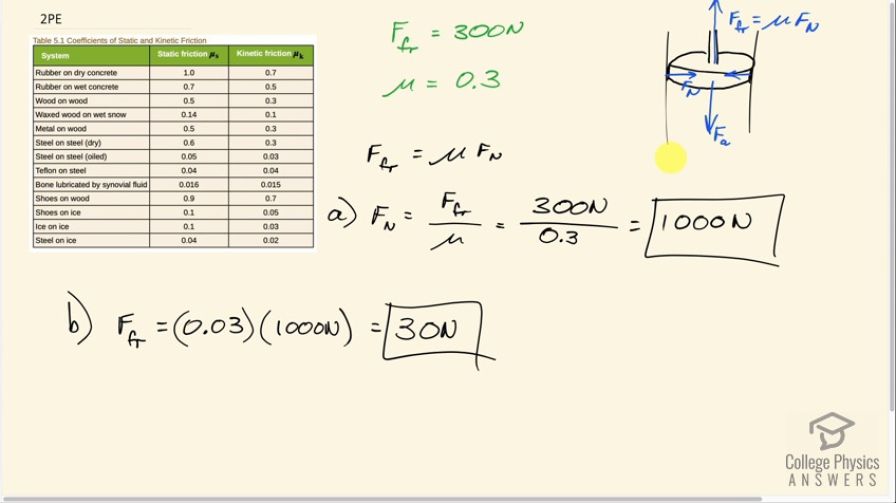Solution video
OpenStax College Physics, Chapter 5, Problem 2 (Problems & Exercises)

Calculator Screenshots
Comments
since the normal force is calculated using the coefficient of friction, isnt part b circular reasoning because now the normal force would be different when using oil?
We know that whether a box is sitting on concrete or ice the normal force is the same. The only time it would change is if the box was pushed down or pulled up on by an external force.
It is however reasonable to think that by adding a thin layer of molecules (oil) between the surfaces of the piston and cylinder that the normal force would increase slightly but I believe we are to assume it's negligible.
Understand the setup of the problem but why use the kinematic coefficient of friction and not the static? The problem doesn’t state that the piston was in motion when the force was applied.
Hi dslangston, thank you for the question. I suppose strictly speaking there is some room for interpretation between kinetic vs static friction. From the phrase that the student will "insert a dry steel piston into a steel cylinder" I feel pretty confident picturing the insertion as a movement, in which case it's kinetic friction. Suppose the student holds the piston initially outside of the cylinder and then proceeds to insert it - in this case the piston is never at rest with respect to the cylinder and only kinetic friction will apply.
Hope this helps,
Shaun
Strictly speaking, wouldn't there be no movement if the exerted force on the piston is equal to the opposing frictional force? If so, does that mean the 300 N of exerted force here is actually ever so slightly greater than that?
Hi rrincones, good question. It's OK for the applied force to be exactly equal to the friction force while the piston is being inserted. Having balanced forces means there is no acceleration. In order to get the piston up to speed, the student must have exerted a force slightly greater than 300N for some brief moment when initially inserting, but then dropped the force back to 300N for the vast majority of the time.
All the best,
Shaun



